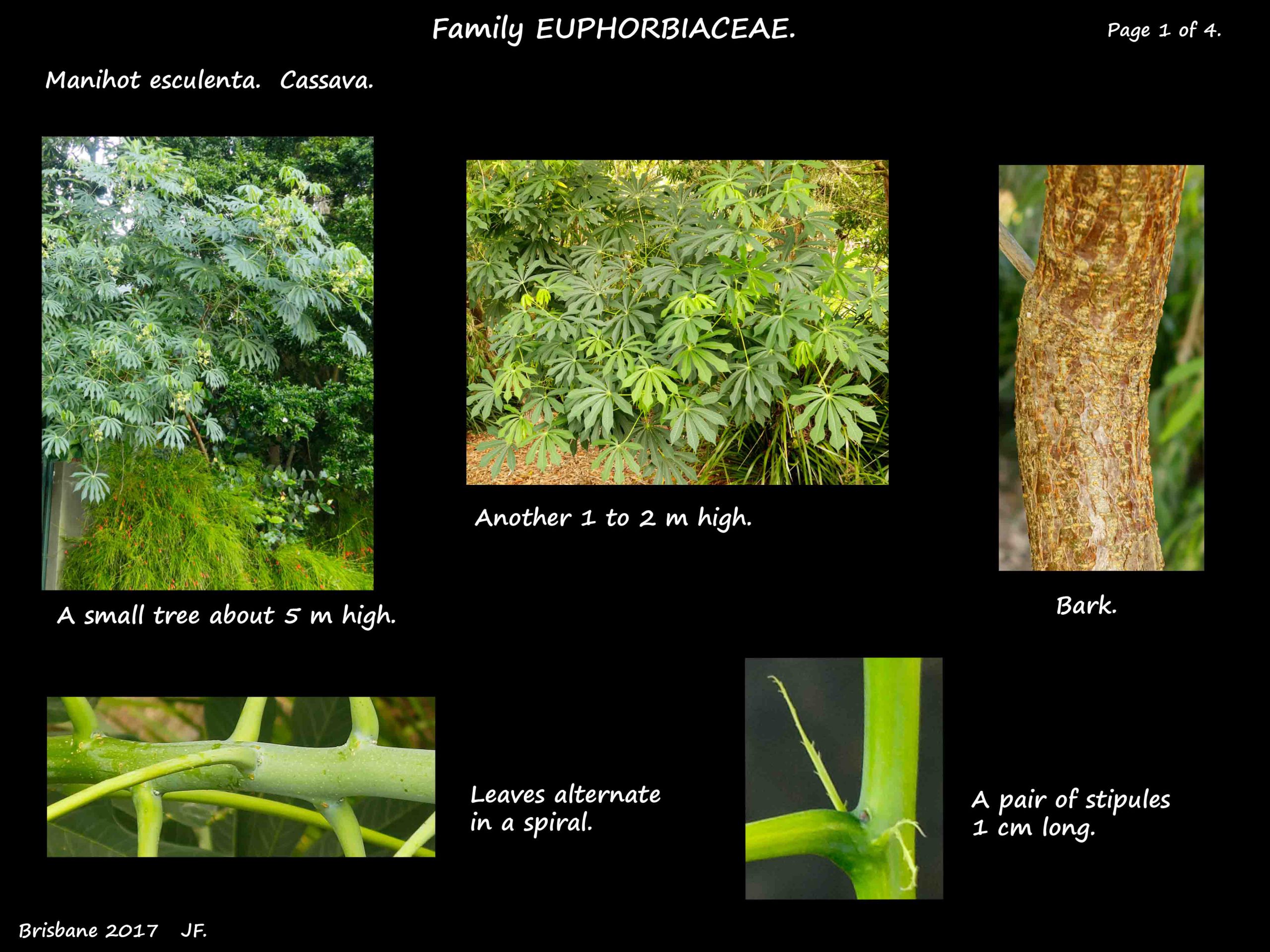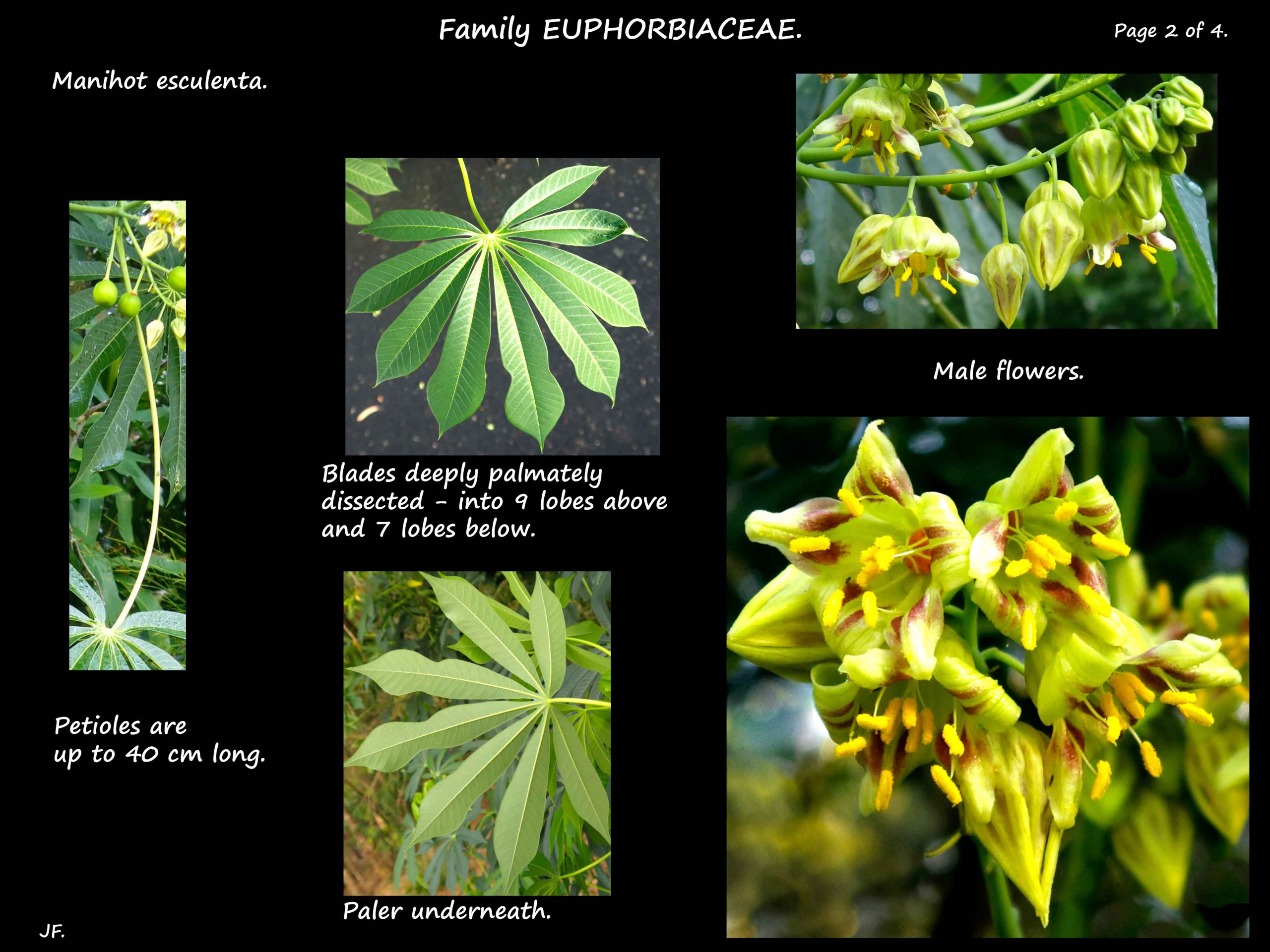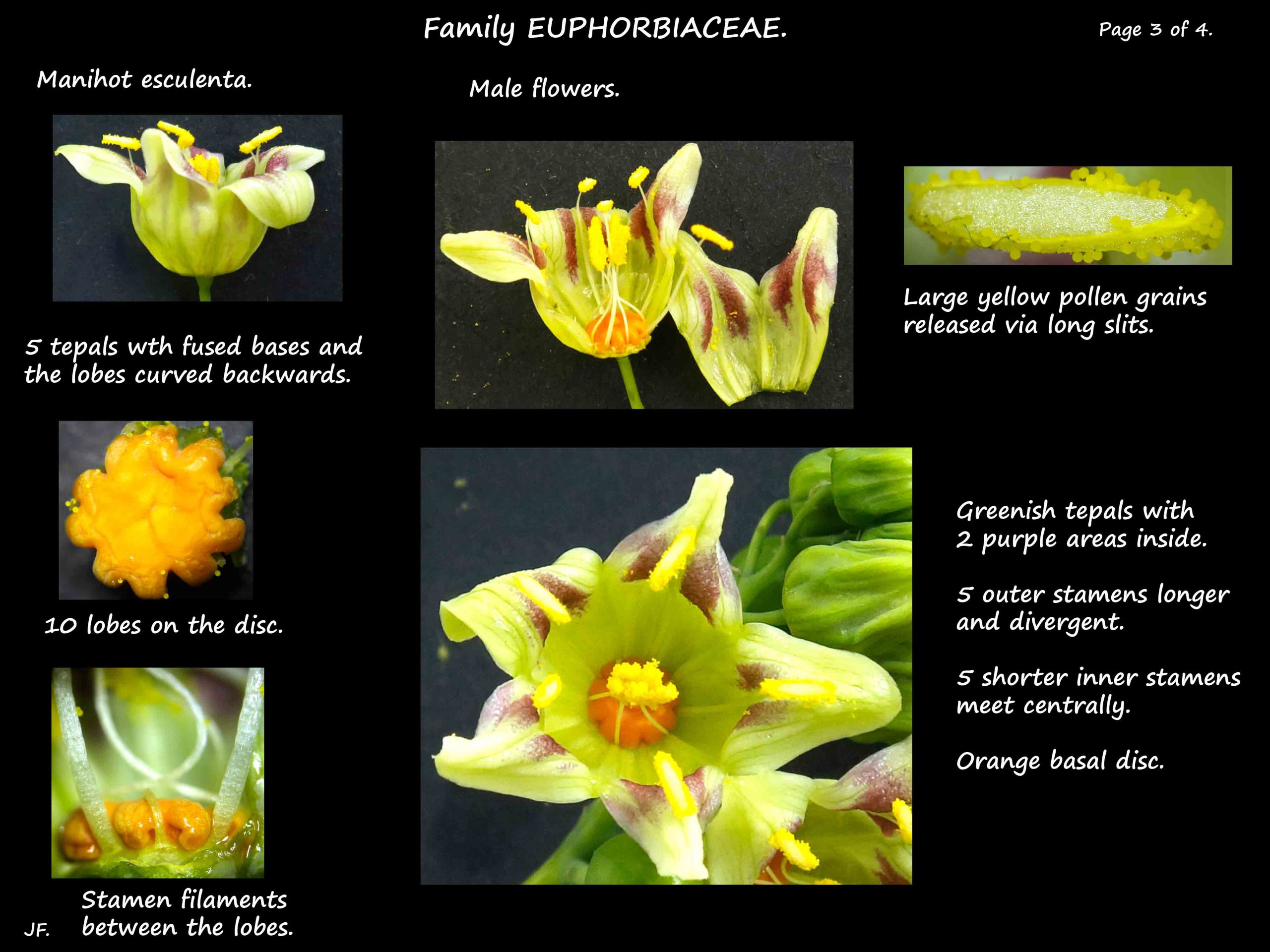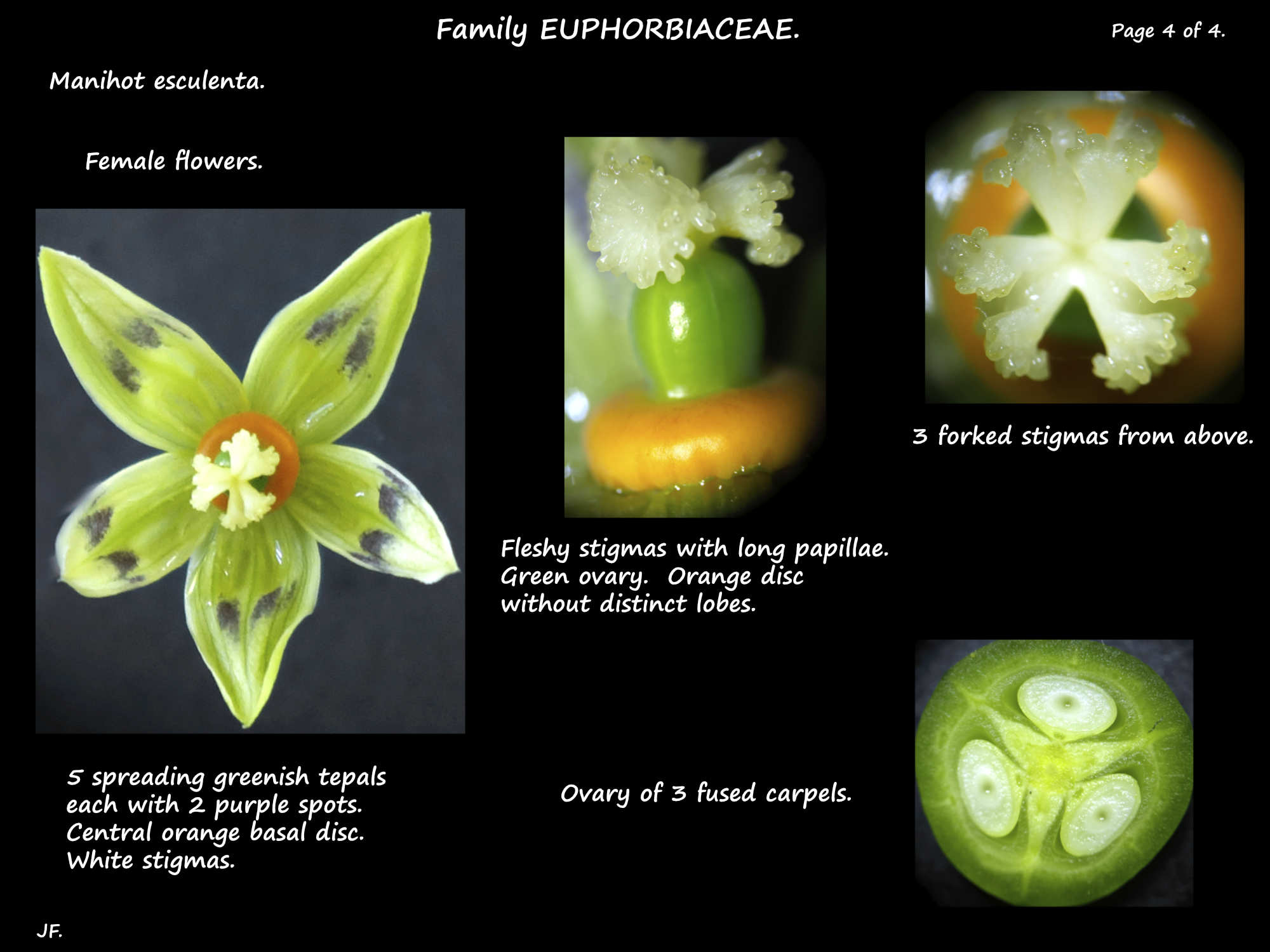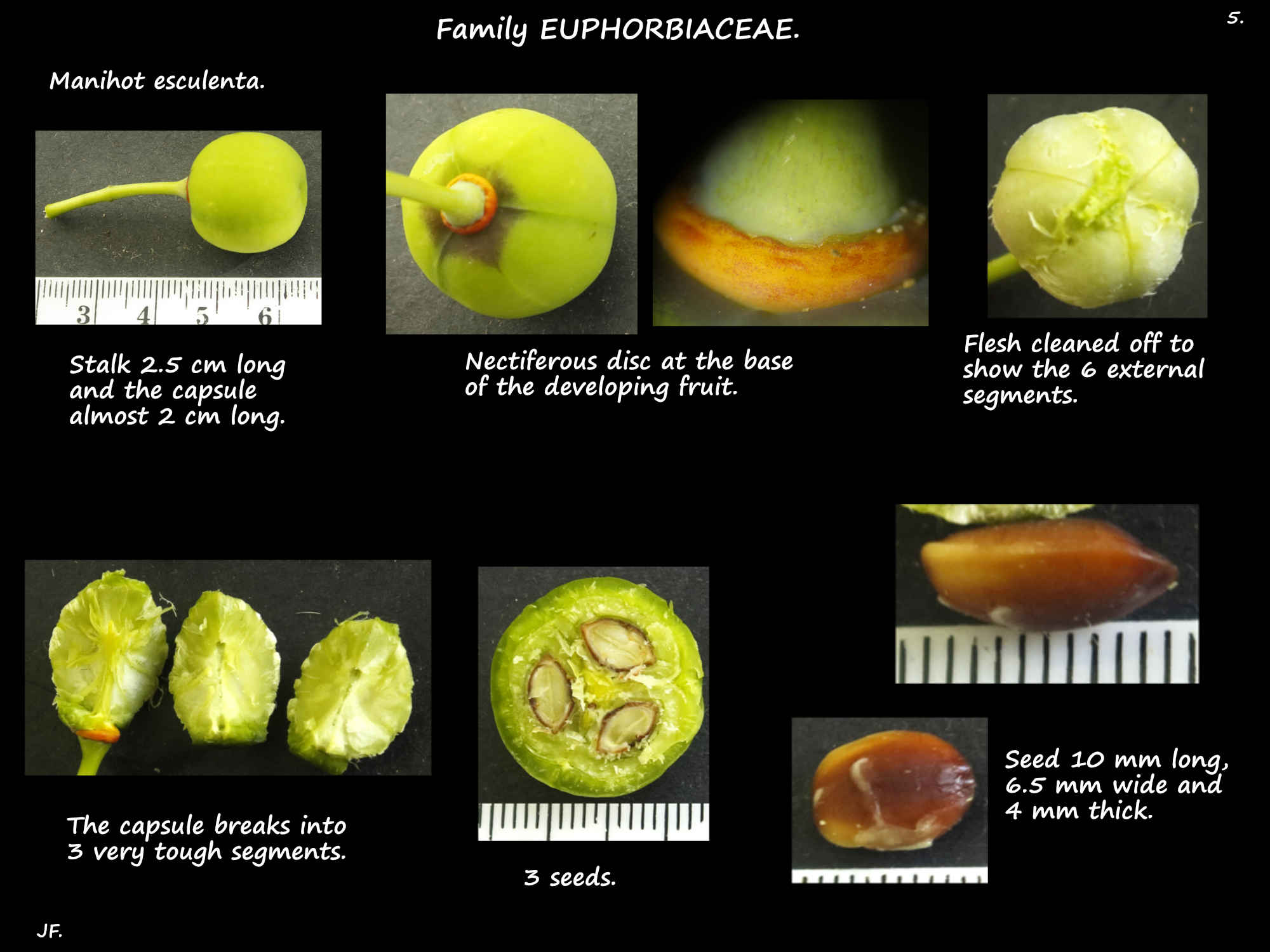Manihot esculenta – Cassava.
Family Euphorbiaceae > Subfamily Crotonoideae > Tribe Manihoteae.
There are around 110 (98 – 170) species known as cassava or manioc.
Manihot esculenta is the only one commercially grown and is naturalised in Queensland.
Its features are variable and there are many hybrids.
A woody, erect or spreading shrub or small tree, up to 4 or 5 m high, with latex in all parts.
It has fibrous roots a few of which become swollen storage roots.
(Commonly referred to as tubers they are roots and cannot be used to produce new plants.)
The edible, starchy roots can be up to 50 cm or more long.
The leaves are alternately arranged in a spiral.
The petioles, up to 40 cm long, have 2 stipules up to 1 cm long at the base.
The blade, up to 20 cm across, is deeply palmatisect with 3 to 7 (12) lobes.
Leaves near the inflorescence are smaller with an often 3-lobed one just under it.
The lobes, up to 15 cm long, are linear, oblong or ovate.
Younger leaves may have very small hairs underneath especially on the veins.
Inflorescences, up to 10 cm long, are terminal or in the terminal axils.
Male and female flowers are on the same plant.
The female flowers, at the inflorescence base, are much fewer in number than the males.
In any inflorescence the female flowers open up to 2 weeks before the males.
The flowers are up to 1.2 cm long on stems up to 2.5 cm long.
There are no petals but 5 tepals in a bell-shaped calyx.
The tepals are yellowish or greenish-white with purple markings.
Male flowers, half the size of the females, are on short, thin stalks.
There is an orange basal disc with 10 prominent lobes.
The 10 stamens, in 2 whorls of 5, arise between the lobes.
The outer five divergent stamens are longer than the inner ones.
The shorter inner 5 converge and meet above the disc.
The large pollen grains are yellow or orange.
The larger female flowers are on longer, thicker stalks.
The basal disc has less obvious lobes.
The ovary, of 3 fused carpels, sits on the disc.
The ovary has 6 ridges on it and each locule has 1 ovule.
The 3 fleshy, forked stigmas are on a very short style.
The fruit are capsules about 1.5 cm long with 6 longitudinal ridges.
Capsules split both between the carpels and into the 3 cavities resulting in 6 segments.
The forcibly ejected seeds, 6 – 10 mm long, are smooth and mottled in brown and grey.
The cultivar ‘Variegata’ has bright green leaves with yellow along the midrib and veins.
J.F.
